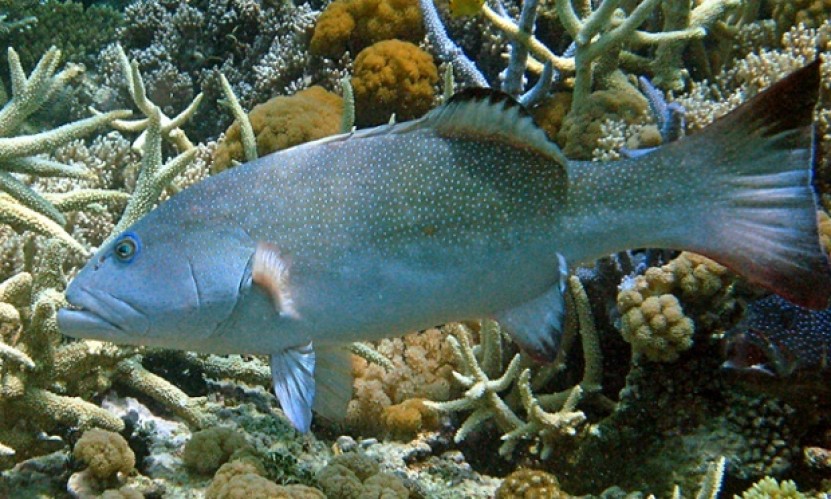Great Barrier Reef protection zones help boost fish stocks 'to pre-European times'

The expansion of no-fishing zones across the Great Barrier Reef has allowed fish numbers to rebound in some places to levels not seen since European arrival in Australia, a long-term study of the ecosystem has shown.
Data taken from underwater surveys of about 40% of the reef’s marine park between 1983 and 2012 found that biomass of coral trout more than doubled in protected areas.
A separate analysis of two comparable reefs, one where fishing was allowed and one where it was banned, found an 80% difference in coral trout biomass.
Biomass is measured not only in the numbers of fish but also their size, demonstrating that coral trout, a popular species for fishers, grow much larger in no-fishing areas, allowing them to spawn more offspring.
About a third of the Great Barrier Reef’s marine park is off limits to any kind of fishing. These “green zones” were vastly expanded to their current size in 2004 – previously, only 5% of the marine park was fully protected.
The research, conducted by the Australian Institute of Marine Science (Aims) and James Cook University and published in Current Biology, found that not only have fish numbers rebounded, they are more robust, coping better with natural events such as cyclones.
Researchers said the analysis vindicated the then-contentious decision to expand no-fishing zones in 2004.
“It was a politically bold move at the time and we needed monitoring to show it has worked – and we now know it has,” said Hugh Sweatman, a scientist at Aims. “The zoning has done exactly what it intended to do. Fishermen seem to be guardedly in favour of the zoning, too.”
Sweatman said the Great Barrier Reef was well managed compared with other reefs around the world, which have suffered from over-fishing where top predators have been removed, leading to negative effects flowing down the food chain.
“Obviously fishing does still have an effect on the Great Barrier Reef but these green zones have taken the fish community back to pre-European times,” he said.
While the green zones appear to have boosted fish numbers, marine life on the reef also has to cope with warming, acidifying waters due to climate change, as well as pressures from pollution and coastal development.
“The reef’s outlook report states that climate change is the biggest long-term threat and it’s safe to say that climate change is not going to be affected by zoning,” Sweatman said.



